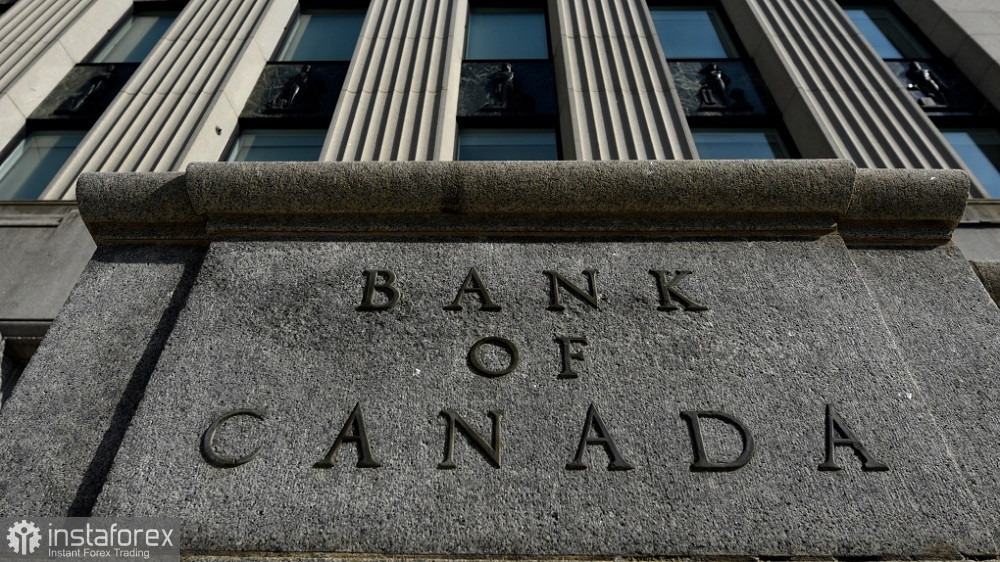On Wednesday, the Bank of Canada will summarize the results of its meeting. The formal results of this meeting are predetermined. There is a high probability that the central bank will keep its monetary policy unchanged. This is the basic, widely expected, and essentially non-alternative scenario. This will not leave any impression on traders. Instead, they will focus on the accompanying statement and the rhetoric of the head of the Canadian central bank. Dovish signals will support USD/CAD buyers, while calls for maintaining a wait-and-see stance will likely trigger a small correction, which can be used to open long positions.

Following the results of the previous meeting in January, the Bank of Canada provided relatively soft comments that exerted pressure on the Canadian dollar. Bank of Canada Governor Tiff Macklem said that discussions had shifted from debating whether the interest rate was high enough to how long the central bank needs to keep the rate at its current level. This statement reflected the essence of the January meeting: the central bank put a final point on rate hikes and simultaneously entered a "wait-and-see mode." Now the main intrigue is how long this will last and when the central bank will finally start to lower rates.
According to the latest data, Canada's annual consumer inflation slowed down to 2.9% in January (the lowest level since June 2023) from 3.4% in December 2023, while most experts predicted an increase to 3.3%. The sharp decline in the CPI is largely due to a decrease in fuel prices: in January, this component of the report decreased by 4.0% on an annual basis and by 0.9% on a monthly basis. Furthermore, clothing and footwear prices were also down (by 3.2% monthly and 1.3% annually).
Thus, the annual inflation rate returned to the Bank of Canada's target range (between one and three percent). At the same time, there is no doubt that the central bank will not draw far-reaching conclusions from this fact. The central bank will likely acknowledge the success in combating inflation but may emphasize that it is too early to declare victory. There will be no moves towards rate cuts until inflation returns to a sustainable path towards 2%. This message will likely be reflected in the accompanying statement in one form or another.
As for the Canadian economy, it grew by 1.0% Y/Y in the fourth quarter. Most analysts expected a less significant increase (0.8%). However, there is no reason for excessive optimism here—economic growth in the fourth quarter was largely driven by global factors, including increased spending in the United States, which stimulated Canadian exports.
The only unequivocal "bright spot" among economic reports was the Canadian labor market data. It turned out that the unemployment rate unexpectedly decreased to 5.7% in January, and the annual wage growth remained above 5%. These figures supported the loonie. However, it is important to note that in a few days, the February labor market data will be released (on Friday). According to forecasts, this report will not be as upbeat as the previous one. In particular, the unemployment rate is expected to rise to 5.9%—the highest level since February 2022. The number of employed individuals is expected to increase by 20,000, but this growth will be driven by an increase in part-time employment. The full-time employment component may once again demonstrate negative dynamics, as it did in January.
In my opinion, the Bank of Canada will likely keep its monetary policy unchanged at the March meeting. However, it may soften its rhetoric and focus on the inflation slowdown in January. At the same time, Bank of Canada Governor Tiff Macklem will probably not commit to any specific timeframe for rate cuts. But the mere fact of a softer stance will increase market confidence that the central bank will start easing monetary policy in the summer, possibly at the June meeting.
From a technical perspective, the USD/CAD pair has been showing an upward trend since December, despite significant pullbacks (which, however, provide opportunities to enter long positions at more favorable prices). On the daily chart, the pair is currently between the middle and upper Bollinger Bands lines, as well as above all the lines of the Ichimoku indicator, which has formed a bullish Parade of Lines signal. Buyers have repeatedly tested the resistance level at 1.3600 (upper Bollinger Bands line on the D1 timeframe), but in vain: the pair has always retreated. Therefore, you may only consider long positions after USD/CAD bulls manage to overcome this target. In that case, the next target for the upward movement will be the level of 1.3710, and in the long term – 1.3820 (upper Bollinger Bands line, but on the weekly chart).
 English
English 
 Русский
Русский Bahasa Indonesia
Bahasa Indonesia Bahasa Malay
Bahasa Malay ไทย
ไทย Español
Español Deutsch
Deutsch Български
Български Français
Français Tiếng Việt
Tiếng Việt 中文
中文 বাংলা
বাংলা हिन्दी
हिन्दी Čeština
Čeština Українська
Українська Română
Română

